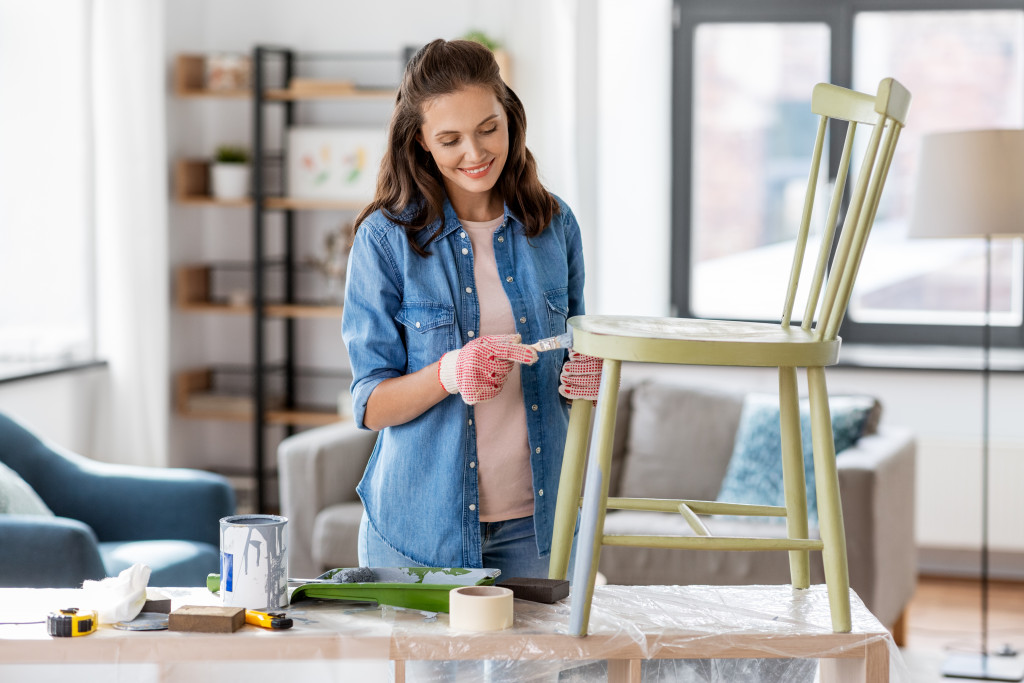- Maintaining and repairing your home is essential to protecting your investment, increasing safety, and reducing stress.
- Home maintenance includes roof repair/replacement, gutter cleaning, exterior painting, and heating/cooling system repair or replacement.
- DIY home maintenance and repair can save money while honing skills, but it is essential to learn the basics first.
- Invest in necessary equipment and supplies for the job, such as power tools, hand tools, safety gear, and materials like lumber or nails.
- Practice manageable tasks before moving on to larger projects; keeping track of completed projects helps ensure future success.
Maintaining and repairing your home is essential to protecting your investment. Not only does this help keep the value of your house up, but it can also help reduce stress and increase safety for you and your family.
Statistics from the American Housing Survey show that 74% of homeowners reported regular home maintenance in 2019 – a significant increase from 57% in 2010. The most commonly-reported jobs included roof repair/replacement, gutter cleaning, exterior painting, and heating/cooling system repair or replacement. These numbers demonstrate how vital home maintenance truly is – it’s not just about keeping up appearances but about ensuring that all necessary repairs are taken care of to keep the property safe, comfortable, and valuable.
Home maintenance protects not just the structure itself but also its inhabitants. Ensuring windows are correctly sealed can help lower energy costs while reducing exposure to allergens and pollutants. Keeping an eye out for mold, moisture damage, and leaky plumbing fixtures can prevent costly water damage and health issues caused by airborne contaminants like mildew or black mold.
Who’s going to do all that? Most homeowners will pay for professional services to perform these tasks. However, if you have the skill and time to complete them, you can save a great deal of money while honing your DIY skills. Here are a few steps to help you become a master.
Learn the Basics
DIY home maintenance and repair is a great way to save money while honing your skills. However, it can be dangerous if you don’t know what you’re doing. Learning the basics is essential before attempting any repair or renovation job. This includes understanding tools and equipment, correctly reading instructions, and safely using any necessary chemicals or power tools.
It’s also important to be familiar with the materials and components of your house to diagnose problems and make effective repairs accurately. For example, learning about electrical wiring will help you understand how electricity works in your home so that you can adequately install switches, outlets, and lights.
Understanding basic plumbing allows you to identify leaks quickly, replacing pipes as needed instead of having a professional plumber do the whole job. If you have an HVAC system installed in your house, learning about airflow and ductwork can help you pinpoint potential issues with efficiency and comfort.
Finally, having a basic understanding of construction principles will enable you to take on more significant projects, such as framing new walls or replacing windows, without putting yourself at risk. Knowing which elements must be secured together for structural integrity or which materials are best suited for specific jobs will ensure the successful completion of DIY projects.
Invest in Equipment and Supplies

The right tools can make all the difference in DIY home repair and maintenance. Before starting any project, figure out which tools and materials you’ll need to complete the job correctly. Here are a few categories that might come in handy:
Power tools
These tools, like drills, saws, sanders, and grinders, require electricity or batteries. Invest in high-quality items from reputable brands so that you can be sure they will work when you need them to.
Hand tools
You use these items manually, such as hammers, wrenches, screwdrivers, pliers, and chisels. Please be sure to look for sets of hand tools tailored to specific tasks so that you have the right tool for the job at hand.
Safety equipment
Safety should always come first when performing any home repair or maintenance. Please ensure you wear appropriate clothing (such as work boots and eye protection) and use safety gear like gloves and face masks if needed.
Basic supplies
You’ll need various materials for project materials, such as lumber, nails, screws, sandpaper, and caulk. Investing in quality supplies will help ensure the longevity of your work. Custom threaded metal fasteners might also be needed for specific projects.
Practice for Mastery

You can’t become a DIY master overnight – it takes practice to hone your skills and confidence. Start with more manageable tasks, like changing lightbulbs or fixing a leaky tap. As you gain more experience, move on to larger projects. Over time, you’ll learn how to work safely and efficiently, allowing you to create practical and aesthetically pleasing improvements.
Finally, keep a record of the projects you’ve completed. This will help you track any specialized skills or tools required for specific jobs so that you can adequately prepare for future tasks.
Final Thoughts
DIY home maintenance and repair can save money, provide a sense of accomplishment, and help keep your house in order. With the proper knowledge and equipment, anyone can become a DIY master. Just bear in mind that safety should always be the top priority – know your limits and respect them, so you don’t put yourself or your property at risk.

